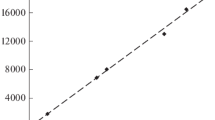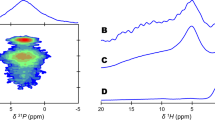Abstract
The ruffled border of osteoclasts in the fracture callus of rat consists of complex infoldings of the plasma membrane forming narrow channels. Absorption of an exogenous, electron-dense compound, thorium dioxide, has been shown to take place via these channels, apparently through “membrane flow”. The contents of the channels are transferred to lysosomes (“specific granules”) located subjacent to the ruffled border. In “transitional regions” adjacent to the ruffled border, uptake of thorium dioxide particles appeared to occur through “membrane vesiculation” (conventional endocytosis).
Résumé
La bordure en brosse des ostéoclastes de cals de fractures de rats présente des plissements complexes de la membrane cytoplasmique formant des canaux étroits. L'absorption d'un produit exogène opaque aux électrons (des macromolécules de dioxyde de thorium) s'effectue par l'intermédiaire de ces canaux, par un «courant» membranaire. Les contenus des canaux sont transférés à des lysosomes («granules spécifiques»), situés sous la bordure en brosse. Dans des «régions de transition», adjacentes à cette dernière, l'absorption de dioxyde de thorium se fait par «vésiculation membranaire» (endocytose classique).
Zusammenfassung
Der gekrauste Rand der Osteoklasten im Frakturcallus von Ratten besteht aus komplexen Einstülpungen der Plasmamembran, die enge Kanälchen bildet. Die Absorption einer exogenen, elektronisch dichten Verbindung, Thoriumdioxyd, erfolgt durch diese Kanäle, offenbar durch einen „Membranfluß”. Der Inhalt der Kanäle wird zu den Lysosomen („spezifische Granula”) geführt, welche unter dem gekrausten Rand liegen. In „Übergangsgebieten”, welche sich neben dem gekrausten Rand befinden, scheint die Aufnahme der Thoriumdioxydpartikel durch „Bläschenbildung in der Membran” (konventionelle Endocytose) stattzufinden.
Similar content being viewed by others
References
Bennett, H. W.: The concepts of membrane flow and membrane vesiculation as mechanisms for active transport and ion pumping. J. biophys. biochem. Cytol.2 (Suppl.), 99–103 (1956).
Cameron, D. A.: The fine structure of bone cells. The biological basis of medicine (E. E. Bittar and N. Bittar, eds.), vol. 3, p. 391–423. London-New York: Academic Press 1969.
Cameron, D. A., Robinson, R. A.: The presence of crystals in the cytoplasm of large cells adjacent to sites of bone absorption. J. Bone Jt Surg.40, 414–418 (1958).
Daems, W. T., Wisse, E., Brederoo, P.: Electron microscopy of the vacuolar apparatus. Lysosomes in biology and pathology (J. T. Dingle and H. B. Fell, eds.), vol. 1, p. 64–114. Amsterdam-London: North-Holland Publ. Co. 1969.
Duve, C. de, Wattiaux, R.: Functions of lysosomes. Ann. Rev. Physiol.28, 435–492 (1966).
Ericsson, J. L. E.: Absorption and decomposition of homologous hemoglobin in renal proximal tubular cells. An experimental light and electron microscopic study. Acta path. microbiol. scand., Suppl.168, 1–121 (1964).
Gonzales, F., Karnovsky, M.: Electron microscopy of osteoclasts in healing fractures of rat bone. J. biophys. biochem. Cytol.9, 299–316 (1961).
Göthlin, G., Ericsson, J. L. E.: Unpublished observations (1970).
Hancox, N.: The osteoclast. The biochemistry and physiology of bone (G. H. Bourne, ed.), p. 213–250. New York: Academic Press 1956.
Hancox, N. M., Boothroyd, B.: Ultrastructure of bone formation and resorption. Modern trends in orthopaedics, vol. 4, p. 26–52 (J. M. P. Clark) London: Butterworths 1964.
Russell, R. G. G., Fleisch, H.: Inorganic pyrophosphate and pyrophosphatases in calcification and calcium homeostasis. Clin. Orthop. Rel. Res.69, 101–117 (1970).
Scott, B. L.: The occurrence of specific cytoplasmic granules in the osteoclast. J. Ultrastruct. Res.19, 417–431 (1967).
Scott, B. L., Pease, D. C.: Electron microscopy of the epiphysal apparatus. Anat. Rec.126, 465–495 (1956).
Vatassery, G. T., Singer, L., Armstrong, W. D.: Hydrolysis of pyrophosphate and ester phosphates by bone extracts. Calc. Tiss. Res.5, 189–195 (1970).
Author information
Authors and Affiliations
Rights and permissions
About this article
Cite this article
Göthlin, G., Ericsson, J.L.E. Observations on the mode of uptake of thorium dioxide particles by osteoclasts in fracture callus. Calc. Tis Res. 10, 216–222 (1972). https://doi.org/10.1007/BF02012551
Received:
Accepted:
Issue Date:
DOI: https://doi.org/10.1007/BF02012551




